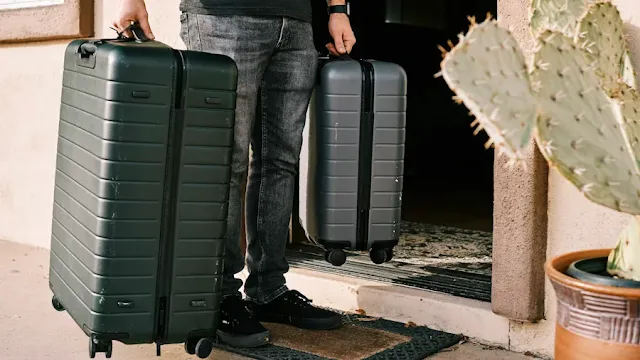Traveling by air can be a delightful experience, but ensuring the safety of your belongings is paramount. Whether you're embarking on a short domestic flight or an extensive international journey, securing your luggage should be a top priority. Yes, you can use locks. While authorities may break the lock if they need to inspect your bag, it can still deter airport thieves from stealing your belongings.
In India, where baggage theft is not uncommon, understanding the best practices for locking your checked suitcase is essential.
This article delves into the specifics of whether you can lock your checked suitcase on Indian flights and how to do it effectively.
Can I Lock My Checked Suitcase and How?
When traveling, the security of your luggage is crucial. Locking your suitcase can help prevent accidental openings and may deter opportunistic thieves. However, it's important to recognize that a lock is not a foolproof theft deterrent. Valuable items should never be placed in checked luggage but instead kept in your carry-on.
Does a TSA-Approved Lock Work in India?
Many travelers use TSA-approved locks, which are designed to be opened by security personnel using a special key, allowing inspections without damaging the lock. This type of lock is recognized and utilized by security agencies worldwide, including India. Using a TSA-approved lock can provide peace of mind, knowing that security checks can be conducted without compromising your lock.
Guidelines for Domestic Flights in India
For domestic flights within India, it's generally recommended not to lock your checked luggage. Security personnel may need to inspect the contents of your bag, and if it is locked, they might have to break the lock. Using TSA-approved locks can mitigate this issue, as security can open these locks without damaging them.
Practical Tips for Securing Your Luggage
- Use TSA-Approved Locks: These locks can be opened by security personnel using a master key, ensuring your lock remains intact.
- Avoid Packing Valuables: Keep important items like electronics, jewelry, and documents in your carry-on bag.
- Consider Tamper-Evident Seals: These can provide an extra layer of security and indicate if your bag has been tampered with.
- Check Airline Guidelines: Always review the specific baggage security procedures of your airline before traveling.
In conclusion, while you can lock your checked luggage on Indian flights, using TSA-approved locks is advisable. This ensures that security checks can be conducted without damaging your locks. By following these guidelines, you can travel with greater peace of mind, knowing your belongings are as secure as possible.










